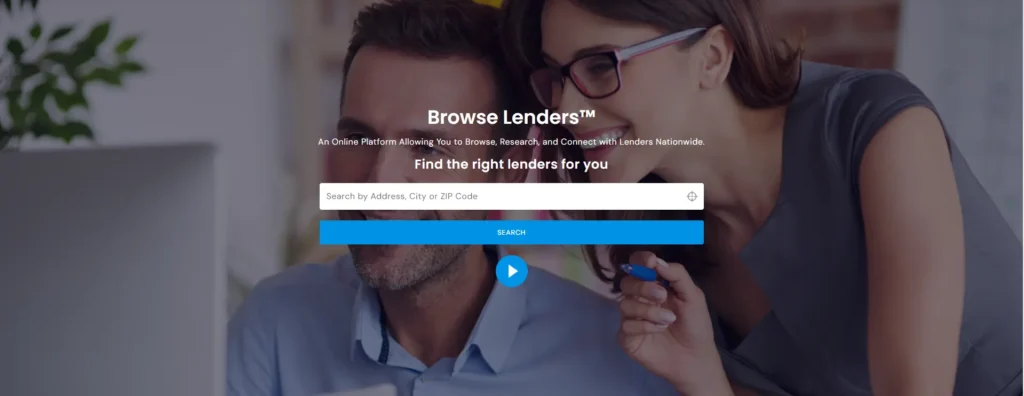Lost Wallet Response Planner: Checklist for canceling and replacing cards, IDs, and securing accounts
Losing your wallet is more than just an inconvenience—it can be a direct gateway to identity theft, financial fraud, and a long-term negative impact on your credit profile. In today’s interconnected world, your wallet doesn’t just hold cash and cards; it often contains the keys to your digital and financial identity. Whether it’s your driver’s license, Social Security card, debit card, credit cards, insurance ID, or even store loyalty cards with saved payment info, losing your wallet can expose you to a host of risks. For individuals trying to build or maintain a healthy Middle Credit Score®, failing to act quickly can result in fraudulent activity that sets you back months or even years.
This guide—designed as a comprehensive Lost Wallet Response Planner—is here to do more than just help you cancel your cards. It will help you respond strategically, limit damage, reclaim your peace of mind, and ensure your credit standing remains intact. Unlike many surface-level checklists that only skim the basics, this planner is structured to walk you through every layer of protection: from financial to digital to identity-based vulnerabilities. Each section is actionable, detailed, and tailored to the realities of modern credit and identity management.
What’s Inside the Lost Wallet Response Planner
This tool provides:
✅ A Complete Itemized Checklist
So you don’t forget to cancel:
- All affected cards
- Government IDs
- Digital payment platforms
- Auto-pays and subscriptions
- Membership and loyalty cards
📞 Contact Directory for Fast Response
Includes:
- Card issuer phone numbers
- DMV replacement instructions
- SSA fraud reporting
- IRS Identity Protection Unit
- Equifax, Experian, and TransUnion fraud alert contact info
📁 Action Tracker
So you can log:
- Date contacted
- Action taken
- Replacement status
- Response deadlines
- Notes and reference numbers
📌 Critical Document Reissue Guide
Step-by-step help to replace:
- Driver’s license or ID
- Social Security card
- Medicare/Medicaid card
- Passport
- Voter registration
- Employer or student ID
🔐 Credit & Account Security Plan
Includes:
- When and how to freeze credit
- How to place a fraud alert
- How to monitor for misuse
- Links to your Middle Credit Score® dashboard for tracking impact
The panic that sets in after losing your wallet is immediate and overwhelming. Questions start swirling in your mind: Who found it? Have they already used my cards? Should I freeze my credit? Can someone open a loan in my name? What about my job ID or health insurance card? Do I need a police report? This guide helps you answer all those questions—and more—with confidence and clarity. With identity theft on the rise and scammers becoming more sophisticated, having a plan is not a luxury; it’s a necessity.
When You Lose Your Wallet, You Don’t Just Lose What’s Inside — You Risk Everything That It Touches
You probably remember exactly where you were the last time it happened — that feeling of panic when you reached into your bag or pocket and realized your wallet wasn’t there.
In a moment, questions flood your mind:
- “Did I leave it at the store?”
- “What was in it?”
- “Has anyone used my cards?”
- “How much of my identity is in the wrong hands?”
Losing a wallet isn’t just about replacing your debit card or renewing your driver’s license. It’s about safeguarding your identity, securing your accounts, and preventing fraud before it spirals into something much bigger.
Unfortunately, most people don’t have a plan — and the consequences of hesitation can be devastating.
That’s why Middle Credit Score® created the Lost Wallet Response Planner — a step-by-step action guide and tracking system to help you:
- Cancel, freeze, or replace every item that was inside
- Secure your identity and credit before fraud can occur
- Contact the right institutions in the right order
- Document your actions and stay in control throughout
- Rebuild confidence and restore peace of mind
Whether your wallet was stolen, misplaced, or lost in a move — this tool is your personal command center for restoring your financial and personal security, and protecting your Middle Credit Score® from the fallout.
Checklist: Steps to Take Immediately After Losing Your Wallet
- Retrace Your Steps and Double Check
- Sometimes what feels like a loss is just a misplacement. Retrace your steps from the last 24 hours and call any stores, restaurants, or transit authorities where you may have left it. Time matters. The sooner you locate your wallet—or confirm it’s gone—the faster you can act.
- Lock or Cancel Your Credit and Debit Cards
- Contact each card issuer immediately to report the loss. Most offer 24/7 fraud departments and mobile tools to lock or disable cards temporarily. Some apps allow you to freeze spending until the card is found.
- Place a Fraud Alert on Your Credit Report
- Contact one of the three major credit bureaus (Experian, Equifax, or TransUnion) to request a fraud alert. That bureau will notify the others. This alert warns lenders to verify your identity before opening new credit.
- Freeze Your Credit if Necessary
- For maximum protection, place a freeze with all three bureaus. This prevents new accounts from being opened in your name until you lift the freeze.
- File a Police Report
- Especially if your Social Security card or driver’s license was in your wallet, file a police report. This creates an official record that may help when disputing fraudulent charges or accounts.
- Contact Your Bank
- Notify your bank to monitor your checking account and halt suspicious activity. They may issue a new debit card and account number.
- Report Lost Government-Issued IDs
- If you lost your driver’s license, passport, Medicare card, or Social Security card, report the loss to the appropriate agency and begin the replacement process.
- Contact Insurance Providers
- Health, dental, or vision cards can be used to commit medical identity fraud. Notify your providers and request replacements.
- Change Online Passwords Linked to Your Cards
- If your wallet was linked to digital accounts, change all relevant passwords and enable multi-factor authentication to prevent unauthorized access.
- Monitor Your Credit Report and Bank Statements Daily
- Use a monitoring service or check your credit report weekly for at least the next 90 days to catch suspicious activity.
Timing is everything. The first few hours after losing your wallet are critical. Fraudsters can use the information found in your wallet to impersonate you, drain your bank accounts, open fraudulent lines of credit, or even access your medical benefits. Worse, many victims don’t even realize damage has occurred until weeks or months later when their credit report shows unfamiliar accounts or their insurance company denies claims because benefits have already been used. By taking the right steps immediately, you can stay ahead of potential threats before they spiral out of control.
Middle Credit Score® is more than just a number—it’s your financial passport. It affects your ability to qualify for a mortgage, get approved for a credit card, secure a car loan, or even rent an apartment. When your identity is compromised due to a lost wallet, your Middle Credit Score® is one of the first things at risk. Even a single fraudulent account can drag your score down by dozens of points, and disputing those items—while possible—can take months of documentation, calls, and emotional stress. That’s why this planner includes specific steps on how to protect your credit immediately, including when to place a fraud alert, when to initiate a credit freeze, and how to monitor for unauthorized changes.
Why Losing a Wallet Is a Major Identity Theft Threat
Let’s be clear: a lost wallet is not a small inconvenience. It’s a mobile vault that often contains:
- Credit and debit cards
- Your driver’s license (with your address and ID number)
- Insurance cards (with sensitive medical information)
- Membership or transit cards (used to track movement)
- Cash, gift cards, or prepaid cards
- Notes or documents with PINs or passwords
- Your Social Security card or number (which should never be carried, but often is)
In the wrong hands, a single wallet can be used to:
- Open new credit lines in your name
- Access bank accounts
- Create a fake identity
- Drain existing funds
- Commit insurance, tax, or medical fraud
- Alter your credit report
- Leave you exposed for years to come
That’s why immediate, structured response is non-negotiable.
This planner is more than just recovery—it’s also about prevention. We’ll walk you through what to carry (and not carry) in your wallet going forward. You’ll learn how to compartmentalize sensitive information, enable multi-factor authentication on all key accounts, and create a backup system for your IDs and payment methods so that if this ever happens again, your recovery is twice as fast. We also recommend the best identity protection services and explain how linking your Middle Credit Score® dashboard to real-time alerts can keep you one step ahead of criminals.
In the sections that follow, we’ll break down every item you might have had in your wallet, categorize them by priority level, and provide a checklist that ensures nothing slips through the cracks. You’ll know exactly how to report missing government-issued IDs, how to get replacements for bank and credit cards, how to secure your digital footprint, and what to say when you call your credit card issuer or insurance company. By the end of this process, you won’t just have recovered your wallet’s contents—you’ll have upgraded your financial and credit security posture for life.
The Most Common Mistake: Panic Without a Plan
Most consumers do the right thing — but not in the right order.
They call their bank but forget to freeze their credit.
They cancel a card but forget about autopayments tied to it.
They replace their license but leave their identity wide open to synthetic fraud.
In the absence of a system, you rely on memory — and memory is unreliable under stress.
That’s why this tool is a planner, not just a list. It guides you through:
- Who to contact
- What to say
- What to freeze, cancel, or replace
- What documents to gather
- And how to track it all in one secure place
Step 1: Secure Your Immediate Financial Access
🔒 Cancel or Freeze Debit and Credit Cards
Your first step is to cancel or freeze every bank card that was in your wallet. Even if you don’t see unauthorized activity yet, the risk is too high.
✅ What to Do:
- Log into each bank or credit card account using your app or website.
- Temporarily freeze the card (if offered), or cancel and request a replacement.
- For debit cards, ask your bank to block transactions and issue a new account number if needed.
- Note down the time, date, and representative’s name.
Track It In Your Planner:
Use the “Card Cancellation Log” to track each card:
| Card Type | Issuer | Action Taken | Date | Reference/Case # | Replaced? |
|---|---|---|---|---|---|
| Credit | Capital One | Canceled + New Card Ordered | 4/10/25 | #388312 | ✅ |
| Debit | Wells Fargo | Account Closed | 4/10/25 | #772119 | ✅ |
📌 Freeze or Close Payment Apps
Were you carrying a phone wallet, Venmo card, or Apple Pay-enabled card? Disable those too:
- Unlink the cards
- Log out of the app
- Change your password
- Enable two-factor authentication (2FA)
Step 2: Place a Fraud Alert or Freeze on Your Credit Reports
To prevent thieves from opening accounts in your name, freeze your credit with each of the three major bureaus or place a 1-year fraud alert.
✅ What to Do:
- Choose either:
- Fraud Alert (1-year alert that requires ID verification for new credit)
- Credit Freeze (completely locks access to your credit report)
- Place alerts or freezes with:
- Equifax | 1-800-349-9960
- Experian | 1-888-397-3742
- TransUnion | 1-888-909-8872
Log It in Your Planner:
| Bureau | Action Taken | Date | Confirmation # | Re-freeze Reminder |
|---|---|---|---|---|
| Equifax | Freeze | 4/10/25 | #EX89321 | 4/30/25 |
| Experian | Freeze | 4/10/25 | #XP10921 | 4/30/25 |
| TransUnion | Fraud Alert | 4/10/25 | Auto Shared | N/A |
📌 Reminder: Freezing your credit will not affect your current accounts or your Middle Credit Score®, but it will stop unauthorized access.
Step 3: Inventory What Was Lost
In your planner, fill out the Lost Wallet Contents Checklist to document exactly what was in your wallet. Include:
- Driver’s license or state ID
- Social Security card (if carried)
- Medical/insurance cards
- Membership cards
- Transit or work ID
- Student ID
- Checkbook or checks
- Cash or prepaid cards
- Gift cards
- Notes with passwords or PINs
- Any other form of personally identifying information (PII)
This helps you take action on everything — not just what you immediately remember.
Step 4: Replace Government-Issued IDs and Documents
Replacing official IDs can take time, so start the process early.
🪪 Driver’s License or State ID
- Visit your state’s DMV website
- Follow instructions for “lost or stolen license replacement”
- Bring alternative ID or documentation (passport, birth certificate, etc.)
- File a police report if required by your state
🧾 Social Security Card
⚠️ Important: You should never carry your SS card in your wallet. If you did, and it was lost:
- Go to SSA.gov
- Report the loss
- Request a replacement (usually limited to 3 per year)
- Consider placing a 7-year extended fraud alert
🏥 Health Insurance or Medicare Card
- Contact your provider or Medicare directly
- Cancel the existing card
- Request a new card with a different ID number if fraud is suspected
Track All Replacements in the “Document Recovery Log”:
| Document | Agency | Replaced? | Date Requested | Notes |
|---|---|---|---|---|
| Driver’s License | Arizona MVD | ✅ | 4/11/25 | Pickup at local office |
| Social Security Card | SSA | Pending | 4/11/25 | Identity theft alert filed |
Step 5: Review and Secure Your Online Accounts
If your wallet contained any information that could help someone guess your logins — or if you use the same password across platforms — you must act now.
🔐 Update Your Passwords
Start with:
- Banking and financial apps
- Email accounts
- E-commerce platforms (Amazon, PayPal, etc.)
- Mobile wallet apps
- Health portals
- Tax preparation sites
Use a password manager to generate strong, unique passwords.
🧠 Activate Two-Factor Authentication
Wherever possible, activate 2FA — especially on:
- Banking
- Credit monitoring tools
- Investment or retirement accounts
Record each update in your Security Log section of the planner.
Step 6: Cancel and Replace Loyalty and Membership Cards
Many store and gym cards don’t seem important — until you realize they can be used to:
- Access rewards or gift balances
- Verify your identity
- Complete purchases if linked to a payment method
- Gain entry to secure facilities
✅ What to Do:
- Cancel all store/gym/library/transit cards
- Order replacements
- Reset any linked payment methods
- Deactivate app access
📌 Pro Tip: Don’t forget student or employee ID cards. These often grant door access, discounts, or purchasing power.
Step 7: Monitor for Suspicious Activity
After completing the immediate recovery steps, you’ll need to monitor:
- Your bank statements
- Your Middle Credit Score®
- All three credit reports
- Your email inbox for suspicious login alerts
- Your mail for pre-approved offers or debt collection letters
Middle Credit Score® allows you to track your score across all three bureaus. If you’ve placed a fraud alert or freeze, use the Credit Freeze Manager to stay updated.
Step 8: File a Police Report (If Applicable)
If your wallet was stolen (not just lost), file a police report:
- Note down the report number
- Provide this if any accounts are fraudulently used
- Some states require a police report for license or ID replacement
Keep a copy of the report in your Document Vault section of the planner.
Step 9: Opt Out of Pre-Screened Credit Offers
Thieves can use pre-approved mailers to apply for credit in your name.
Visit OptOutPrescreen.com to:
- Opt out for 5 years
- Prevent future junk mail credit offers
- Reduce paper trail exposure
Track this action in the “Preventive Steps” section of the planner.
Step 10: Print or Save Your Completed Action Log
After completing all steps, export or print your planner for safekeeping. This becomes:
- Proof you took immediate action
- A recovery reference for insurance or law enforcement
- A historical record if new fraud appears months later
Bonus: Prepare a Wallet Inventory for the Future
Once you’ve recovered from a lost wallet, create a backup system in case it ever happens again:
- Photograph the front and back of all cards
- Write down all card issuer contact info
- Store this in a secure password-protected folder or physical safe
- Keep your Social Security card out of your wallet permanently
- Consider carrying only one card and ID for daily use
Download the “My Wallet Inventory Sheet” from the planner for proactive security.
Why Every Hour Counts
The FTC estimates that identity theft can begin within minutes of a wallet being lost or stolen. A motivated thief can:
- Swipe your card at an ATM
- Use your driver’s license to create a fake identity
- Order products online using saved info
- Open instant store credit lines
- Use healthcare benefits before you cancel the card
- File a tax return before you do
The first 24 hours are your best shot at stopping fraud in its tracks.
How This Tool Supports Your Middle Credit Score®
Losing a wallet doesn’t just impact your wallet. If mishandled, it can damage your credit report — and more specifically, your Middle Credit Score®.
Here’s how:
- Unauthorized hard inquiries lower your score
- New fraudulent accounts drop your average age of credit
- Missed autopayments (on canceled cards) create late payments
- Collection attempts from charges you didn’t make cause derogatory marks
- Inconsistent reporting across bureaus skews your Middle Score®
By using the Lost Wallet Response Planner, you protect your score from the domino effect of bad data, and preserve the clean, accurate reporting your future depends on.
Who Should Use This Tool
You need this planner if:
- You’ve lost or had your wallet stolen
- Your purse or bag was taken
- Your driver’s license, Social Security card, or ID was separated from your control
- You believe someone may have copied or photographed your wallet contents
- You found your wallet but suspect it was tampered with
- You manage a dependent’s or elderly person’s personal documents
- You want a ready-to-use system in case it happens to you or your family
Even if you’ve recovered your wallet, if you’re unsure what was accessed — it’s safer to use the planner and proceed proactively.
What Makes This Different from an Internet Checklist
Generic wallet loss checklists are fine — if all you need is a reminder to call your bank.
But identity protection requires more. That’s why this tool includes:
- A smart order of operations to prevent compounding damage
- An action log to track each step
- A replacement guide for documents that require paperwork
- Links to credit security tools and government agencies
- Built-in tracking for your Middle Credit Score®, including alerts if it changes
This planner helps you think ahead, act fast, and recover completely — not just cancel cards.
What Happens After You Use the Planner
When you complete the checklist and tracking form, you’ll walk away with:
- Peace of mind that every step was taken
- A clean paper trail (in case fraud occurs later)
- Replacement documents on their way
- All cards deactivated
- Fraud alerts or freezes placed
- A monitored Middle Credit Score®
- A log of who you called and what was said
If fraud does occur after the fact, this log becomes your proof — a timeline that shows you took the right steps and followed protocol. It also speeds up resolution and protects you from liability.
Why It Belongs in Your Toolkit (Even Before It Happens)
You don’t wait to buy insurance until your house is on fire. In the same way, the Lost Wallet Response Planner is a tool you can:
- Download, fill out in advance, and store safely
- Use as an emergency reference if your wallet is lost
- Share with family, roommates, or clients you help
- Include in your estate or emergency planning kit
If nothing else, the planner gives you a mental map — so that if the worst happens, you don’t panic. You act.
FAQs: Lost Wallet Recovery and Credit Protection
Q: What should I NOT keep in my wallet? A: Avoid carrying your Social Security card, birth certificate, passwords, or PINs. These items are especially dangerous in the wrong hands.
Q: Will a fraud alert or credit freeze hurt my credit score? A: No. These actions are protective measures and have no impact on your credit score.
Q: How long does a fraud alert last? A: A fraud alert typically lasts one year but can be renewed. Extended alerts last up to seven years if you’ve been a confirmed victim of identity theft.
Q: Should I report the loss to the FTC? A: Yes, especially if you suspect identity theft. Visit IdentityTheft.gov to file a report and receive a personalized recovery plan.
Q: Can someone use my driver’s license to steal my identity? A: Yes. A stolen license can be used to impersonate you or open fraudulent accounts, especially when combined with other personal data.
Q: Is a lost store loyalty card a big deal? A: It can be. If your loyalty card is linked to saved payment methods or personal data, it could become a vulnerability.
Q: Should I cancel all cards even if I think my wallet was just misplaced? A: It’s best to err on the side of caution. Most banks allow you to freeze or lock cards temporarily until you’re certain.
Q: What’s the fastest way to recover IDs and cards? A: Use online portals when available (e.g., DMV, bank apps) and document everything. In-person visits may be necessary for some items.
Q: Can I prevent this from happening again? A: Yes. Minimize what you carry, set alerts on all financial accounts, and back up key documents in a secure digital vault.
Conclusion: What You Do Next Defines What Happens Next
Losing a wallet is not the end of your financial control. It’s the moment you choose to take it back.
The Lost Wallet Response Planner doesn’t just help you respond — it helps you recover with order, efficiency, and protection for the parts of your life that matter most.
- A clear plan
- A secure system
- A protected credit profile
- A documented response trail
- Peace of mind
What could have been a catastrophe is now just a temporary setback — and one you’ve handled with confidence and control. Whether you’ve already lost your wallet or simply want to be prepared, this planner puts you in control. Let’s begin the process of protection, prevention, and peace of mind.
Middle Credit Score® Support Center
Browse Lenders® – Speak with a Lending Expert






